One of the foundational guitar lessons every aspiring player should tackle is understanding the notes on the fretboard. Knowing your Guitar Notes unlocks a world of musical possibilities. Even without prior chord knowledge, recognizing notes empowers you to discover chords and navigate the instrument with confidence. The guitar fretboard might seem daunting at first glance, but mastering it is more achievable than you think. With consistent practice and a few clever techniques, learning guitar notes becomes an enjoyable part of your musical journey.
 The Musical Alphabet
The Musical Alphabet
The Natural Musical Alphabet: Your Starting Point
Embarking on your guitar note adventure begins with grasping the natural musical alphabet. This alphabet, specific to music, consists of seven notes: A, B, C, D, E, F, and G. These are termed “natural” notes because they don’t include sharps or flats. Sharps and flats, the variations in between, come next. Understanding these natural notes is the crucial first step to mapping out the entire fretboard. Once you’re comfortable with these, comprehending sharps and flats is simply a matter of understanding musical steps up and down.
Understanding Sharps and Flats on the Guitar
Sharps and flats represent the notes that lie halfway between the natural notes. Each fret on your guitar represents a half-step in musical distance.
A sharp (#) indicates a note that is a half-step higher than a natural note. For example, moving up one fret (a half-step) from A results in A#.
Conversely, a flat (♭) signifies a note that is a half-step lower than a natural note. Stepping down one fret (a half-step) from A gives you A♭. A point of potential confusion is that the same guitar note can have two names, depending on musical context, specifically the key you are playing in. For instance, the note situated between D and E can be called D# if you are moving upwards from D, or E♭ if you are descending from E.
 Sharps & Flats
Sharps & Flats
Pro Tip: Visualize a bug to remember flats. When you flatten a bug by stepping down on it, think of flats as notes a half-step down from a natural note.
The Essential BC & EF Rule for Guitar Notes
A vital rule to remember when learning guitar notes is the BC & EF rule. All natural notes are separated by a sharp or flat, except between B and C, and between E and F. Between B and C, and E and F, there is only a half-step difference, meaning there is no sharp or flat note in between them. Therefore, a half-step up from B leads directly to C, and a half-step down from F leads directly to E. This rule simplifies fretboard navigation significantly.
Open String Names: Your Fretboard Anchors
In standard guitar tuning, the open strings, from thickest to thinnest, are tuned to E, A, D, G, B, and E. Playing an open string, meaning you pluck the string without pressing down on any fret, produces these specific notes. These open string notes serve as your initial reference points for learning the fretboard. Notice that the thickest (lowest E) and thinnest (highest E) strings are both E. This mirroring means you’ll encounter repeating note patterns, reducing the overall memorization load.
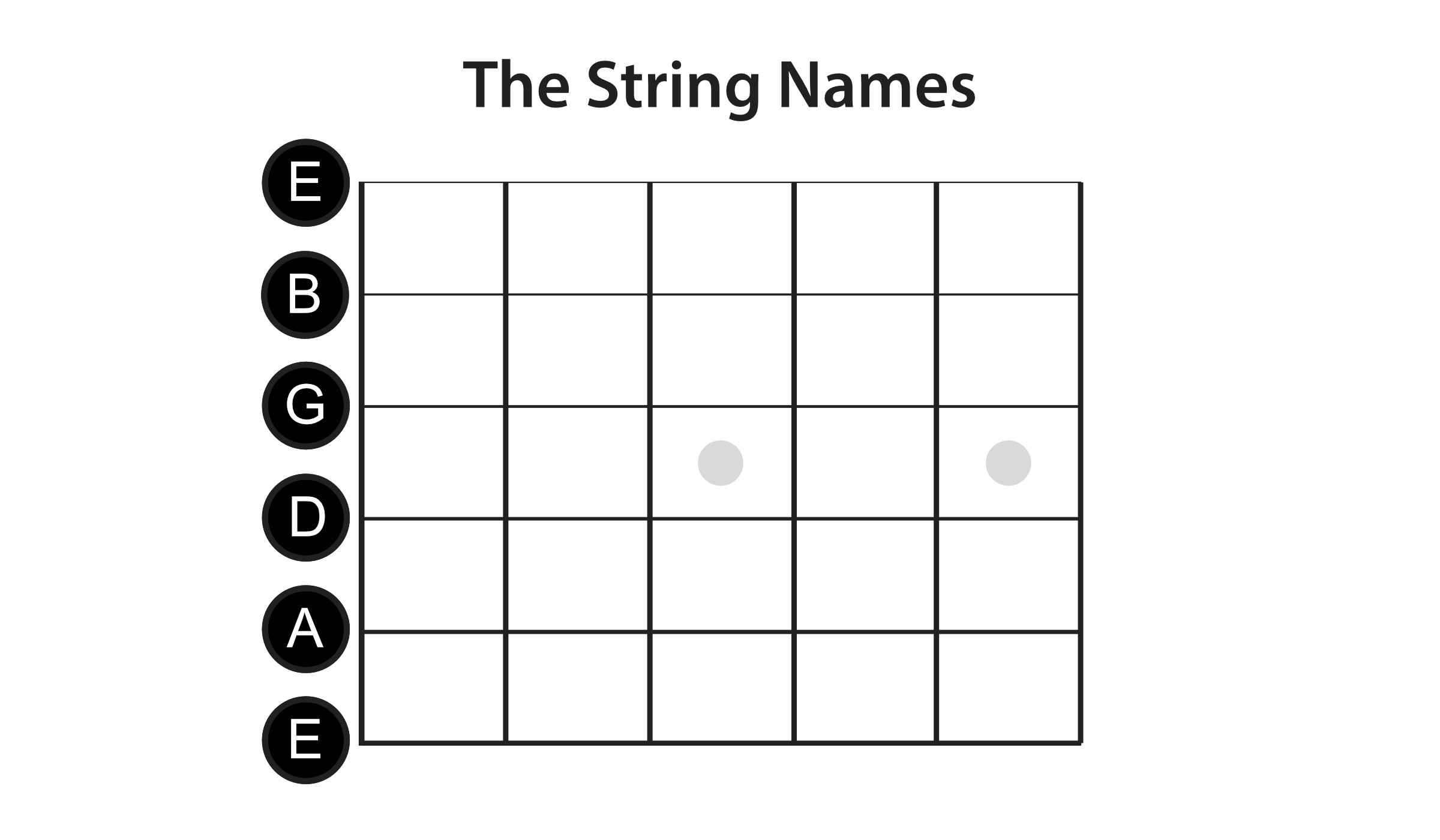 Guitar String Names
Guitar String Names
Counting Up Frets: Mapping Notes on Each Guitar String
With the open string notes as your starting points, learning the rest of the fretboard becomes a process of counting up half-steps (frets). Each fret you move up represents a half-step increase in pitch. As illustrated in the fretboard diagrams below, the first fret on any string is one half-step higher than the open string note. Always keep the BC & EF rule in mind as you ascend the fretboard to correctly identify each guitar note.
E String Notes:
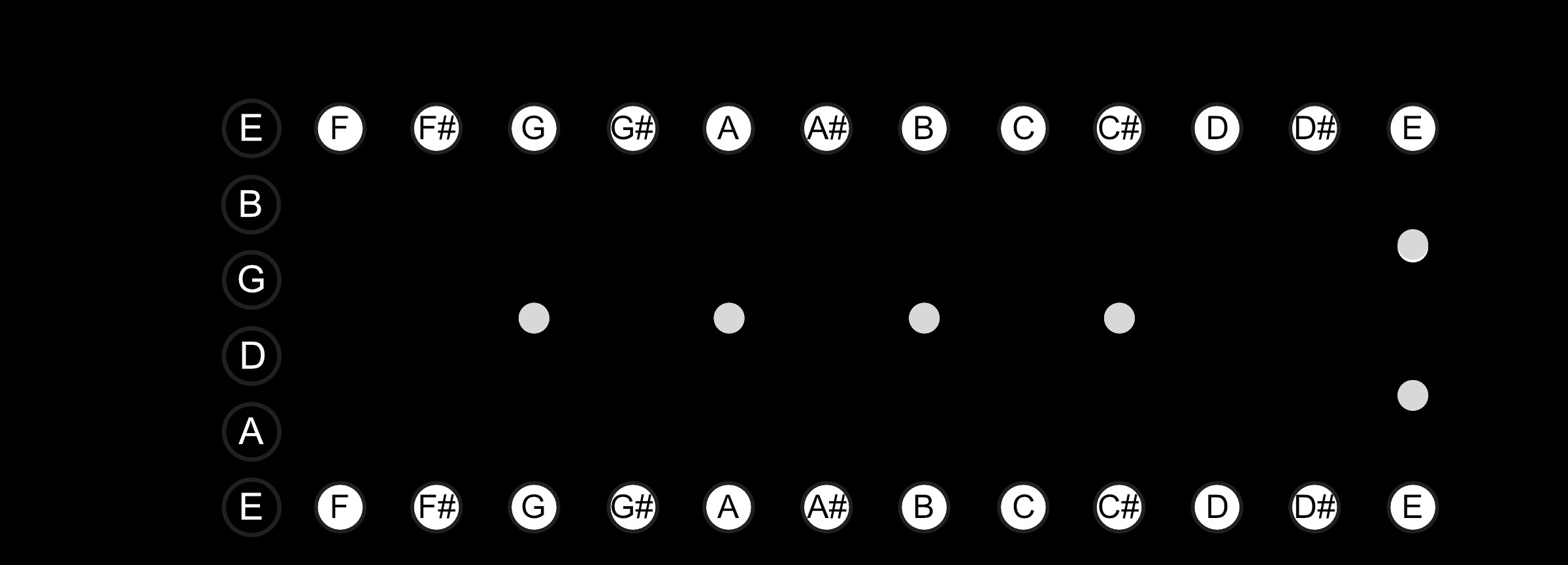 E String Note Names
E String Note Names
A String Notes:
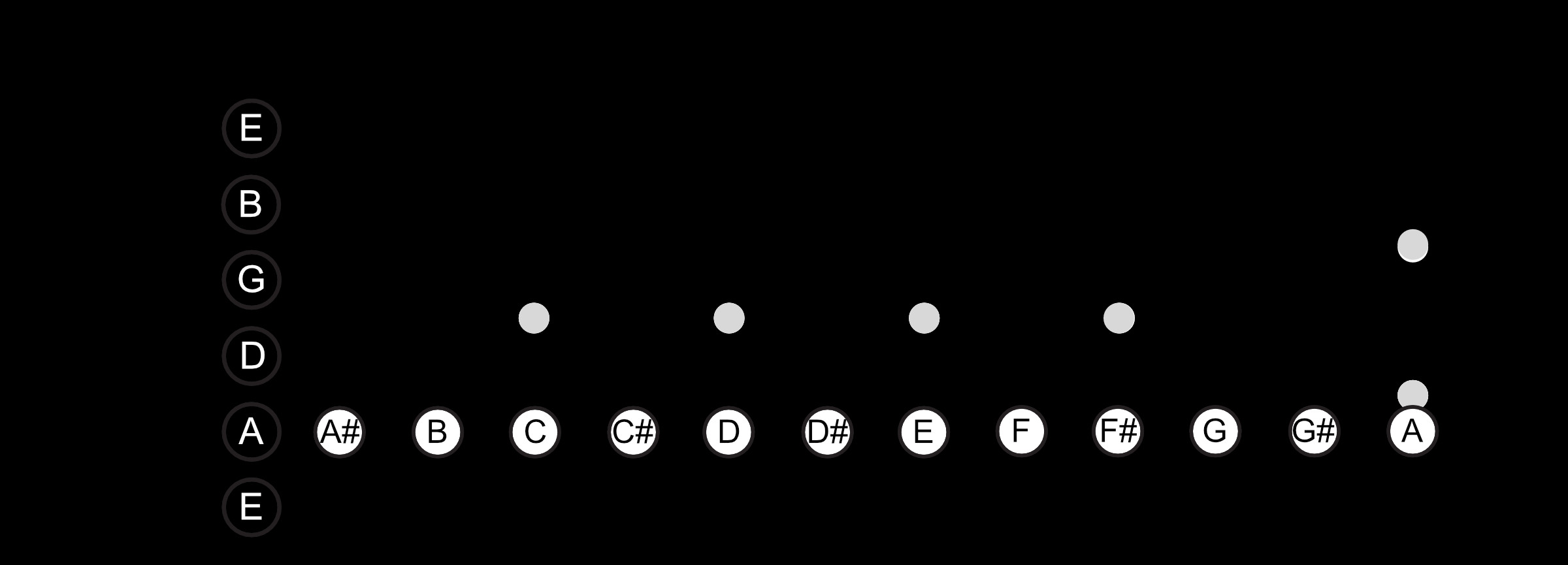 A String Note Names
A String Note Names
D String Notes:
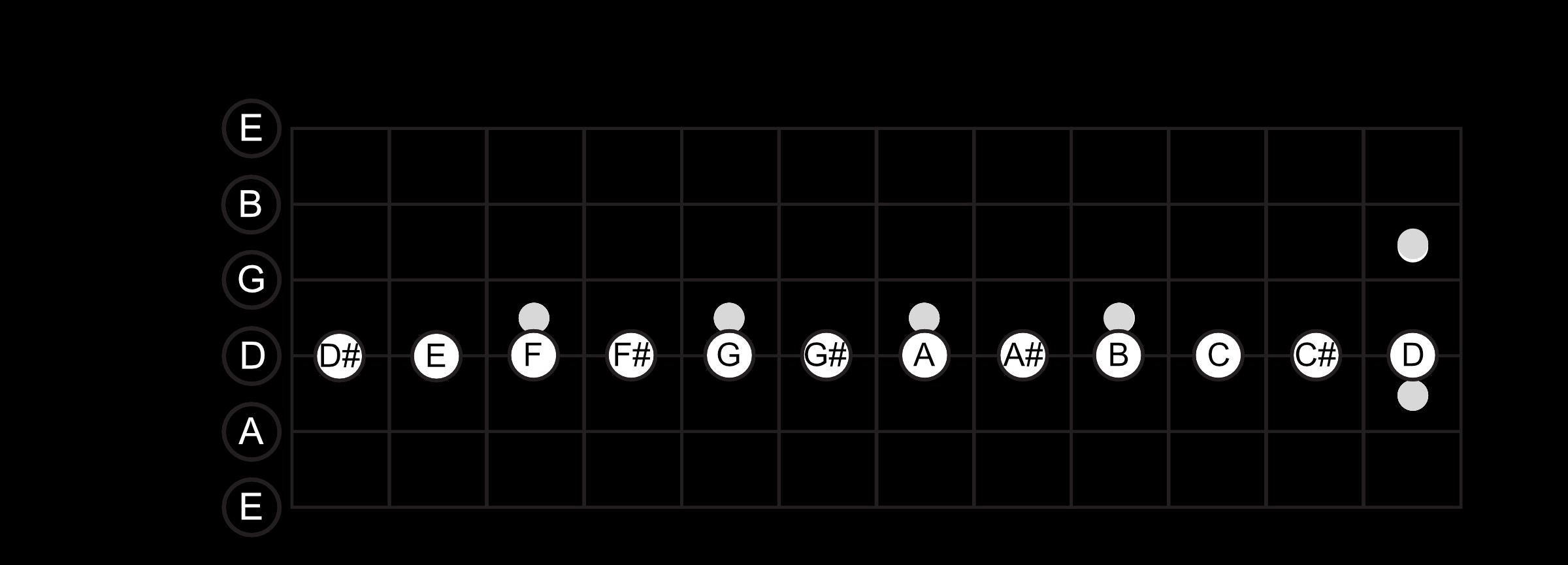 D String Note Names
D String Note Names
G String Notes:
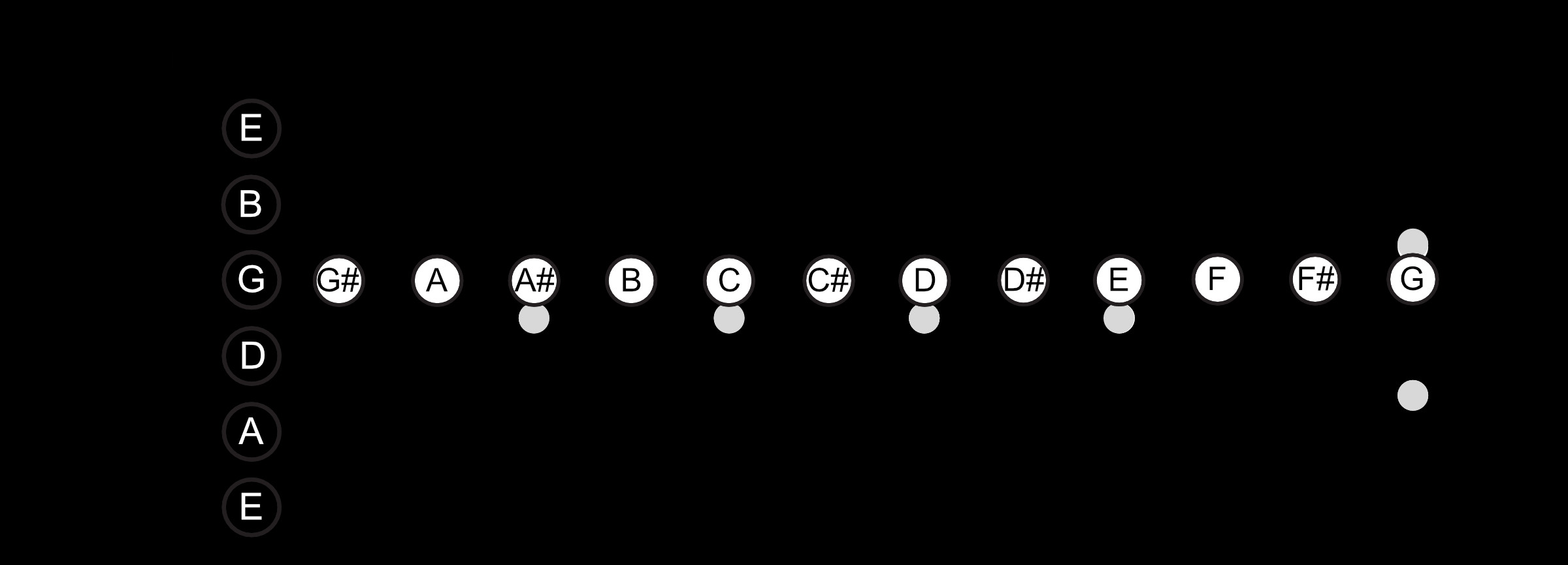 G String Note Names
G String Note Names
B String Notes:
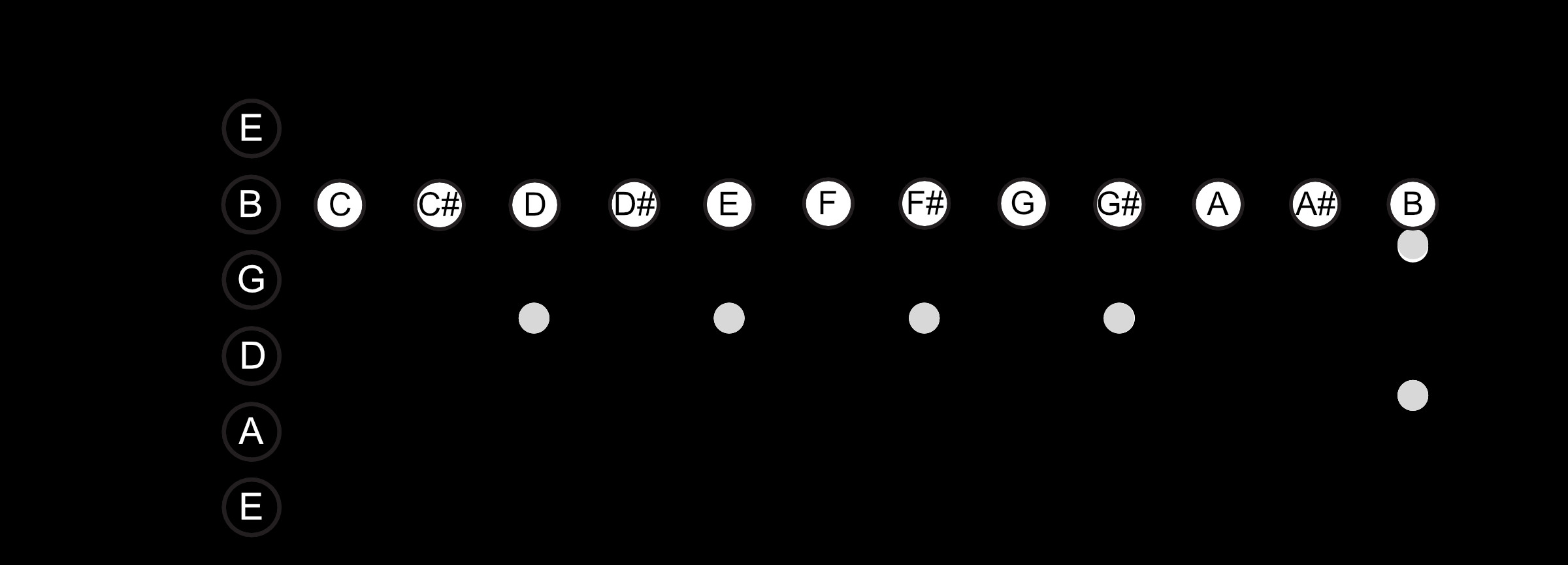 B String Note Names
B String Note Names
The 12th Fret Octave: A Fretboard Shortcut
Here’s a valuable trick that simplifies learning guitar notes significantly: you only need to deeply learn the first 12 frets. Beyond the 12th fret, the notes begin to repeat in octaves. For example, observe the B string diagram above. At the 12th fret, the note is B again – an octave higher than the open B string. Consequently, the 13th fret will be C, just like the 1st fret on that same string. This octave repetition dramatically reduces the amount of new information you need to memorize to navigate the entire fretboard.
Octave Centers: Navigating the Fretboard Efficiently
The concept of octave centers offers another efficient method for finding any note on the fretboard. By learning octave shapes originating from your E and A strings, you can quickly locate notes across the neck. Octave shapes are typically found two strings away and either two frets higher or lower, depending on the strings you are referencing. For instance, in the diagram below, you can see how to locate a G note on the D string by referencing its octave position relative to a G note on the E string. Once you know the notes on the D string, you can then use it as a reference to find notes on the B string.
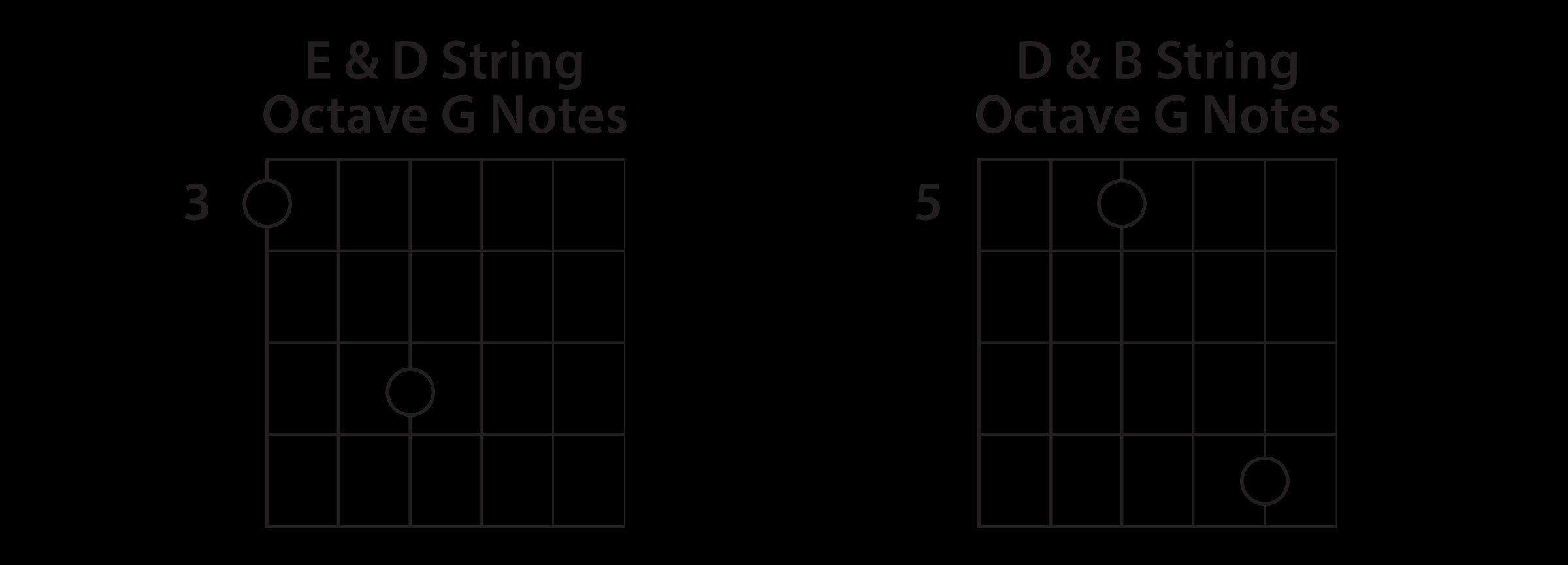 E & D String Octave Centers
E & D String Octave Centers
Similarly, you can utilize your A string as a reference to find notes on the G string, and subsequently, use the G string to locate notes on the high E string. Mastering these octave relationships is key to quickly and accurately finding any guitar note.
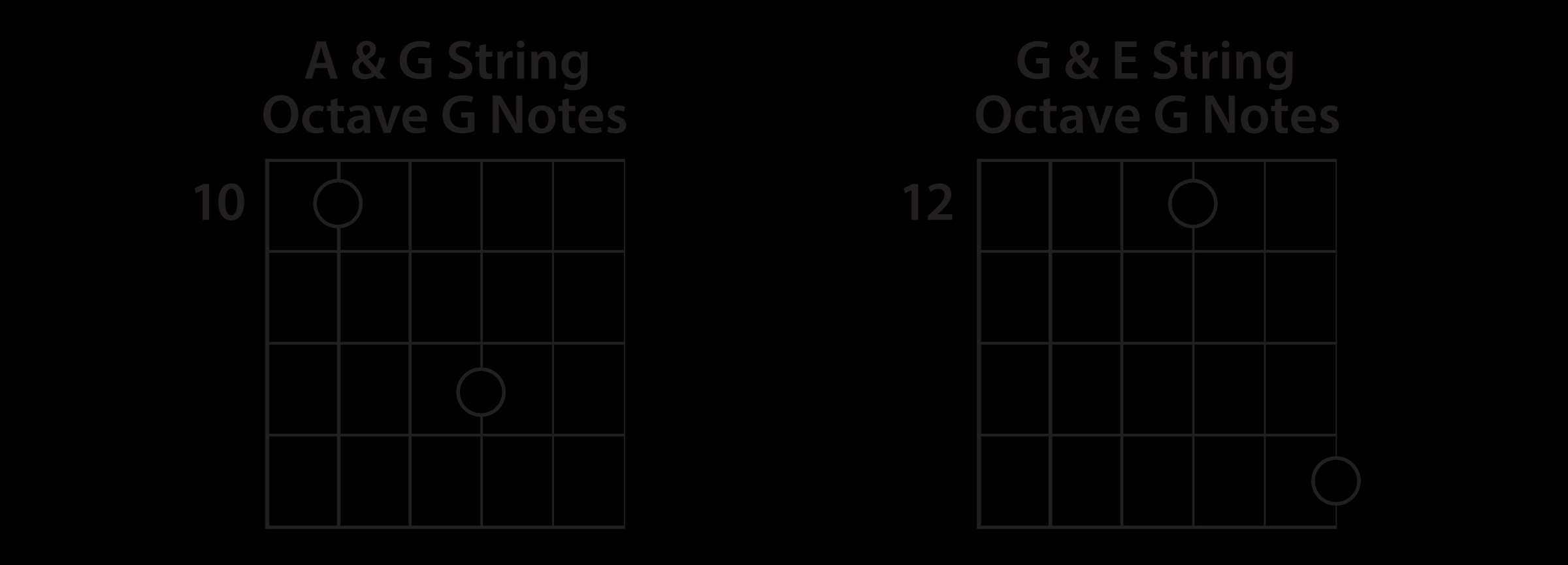 A & G String Octave Centers
A & G String Octave Centers
Bringing It All Together: Your Journey to Fretboard Mastery
Your next step is to dedicate time to learning the notes on your E and A strings. Once you have a solid grasp of these, mastering the notes across the entire guitar fretboard will become significantly easier. Consistent practice and application of these techniques will pave the way to fretboard fluency.
Are you eager for more advanced lead guitar lessons and engaging jam tracks? Guitareo by Nate Savage offers a comprehensive step-by-step video training system designed to elevate your guitar skills. Explore a vast library of songs covering diverse musical styles, including rock, country, metal, jazz, and more. Best of all, Guitareo includes a rich collection of original jam tracks, providing the perfect platform to apply your newfound fretboard knowledge musically.

